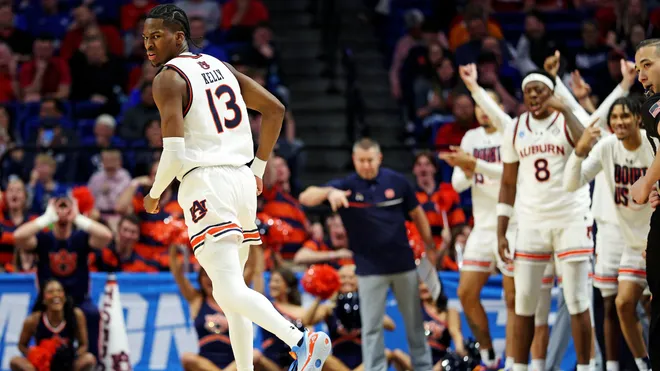Let’s call a spade a spade.
Before the Final Four, this year’s men’s NCAA basketball tournament was a dud.
Upsets were few and far between, with no Cinderella runs. There was no Jack Gohlke or Doug Edert for the country to learn about in real-time as they took down a blue blood program. Fans who picked a ‘chalk’ bracket were finally rewarded.
As a result, all four number-one seeds reached the Final Four for the first time since 2008. They were clearly the four best teams in college basketball this season, culminating in three of the best college basketball games in recent memory.
This year’s tournament could signal what is on the horizon for college basketball.
This whole tournament and the ensuing Final Four is the result of multiple years of NIL money and increased player movement and is perhaps an indicator of the future of the tournament itself.
The financial gap between Power 5 schools and other conferences is vast, leading to talent being even more concentrated than in the past.
Take Walter Clayton Jr., for example. Though no matter the era, there would have always been the possibility he would transfer given his prodigious talents; in today’s environment, NIL money made his transfer from Iona to Florida seem inevitable.
In the past, there was a chance he would stay at Iona and be the driving force behind an improbable tournament run. Now, the idea that smaller programs can keep hold of players they recruited and developed seems outdated.
The same applies to Auburn’s Johni Broome, who starred for Morehead State in the OVC before transferring to Auburn.
Even for past players, it is fair to wonder if they would have stayed at their mid-major schools in today’s college basketball. In 2025, would Ja Morant even be at Murray State for his sophomore season to upset Marquette in the tournament? Or would he have left after his freshman year for a bigger program?
As more and more mid-major stars follow this path, talent will continue to be centralized in the Power 5 conferences, likely leading to fewer upsets come tournament time in the future.
NIL and the transfer portal aren’t just bleeding smaller schools dry of talent. They are also keeping players in school longer.
With the money available to players, especially those who are likely fringe NBA players who stand to make more in college than they would professionally, it makes sense that upperclassmen are opting to stay in school longer.
This trend leads to deeper, more experienced teams, two key ingredients for programs that are hoping to go on a run in March.
This year’s Final Four demonstrated how experienced teams thrive when the pressure is cranked up. Players like LJ Cryer and Alijah Martin had already played in the Final Four, gaining invaluable experience for themselves and their teammates.
The National Championship game felt like an NBA playoff game full of experienced veterans going at it, likely a sign of things to come as players stay in school longer.
It is not a guarantee, but there is a definite possibility that more players moving on from mid-majors and using all of their eligibility will lead to more NCAA tournaments like this in the future. Tournaments where the best teams on paper impose their superiority, and the lower seeds struggle to make waves.
This is not to say the athletes are at fault for this potential trend or that the changes to the transfer portal and the introduction of NIL need to be walked back to preserve the mystique of the tournament.
College athletes should be able to make money from all they put into their craft. Additionally, if their coaches can up and leave whenever they like, players should also be able to.
If March Madness loses a bit of its luster so that college athletes can reap the benefits of their sport that they were deprived of for so long, that is a price all involved should be willing to pay.


